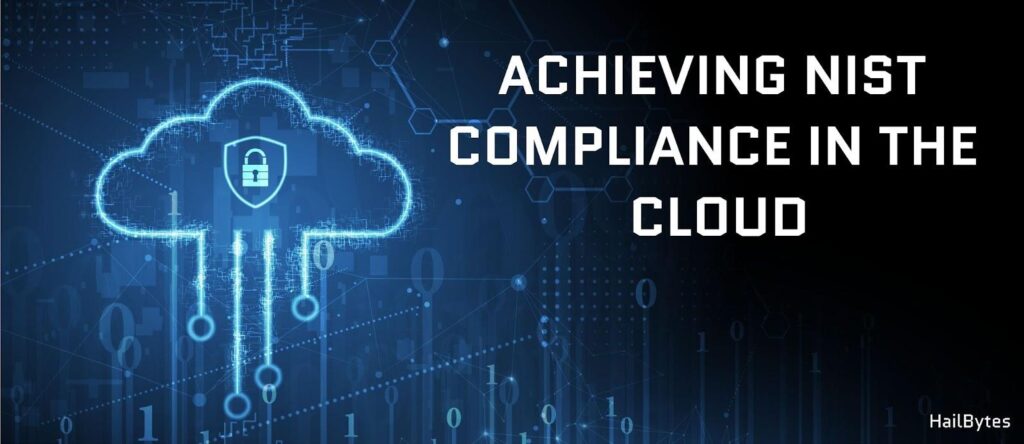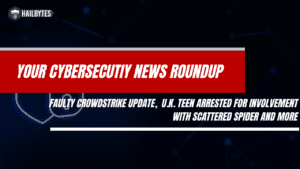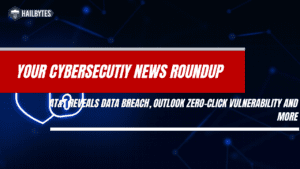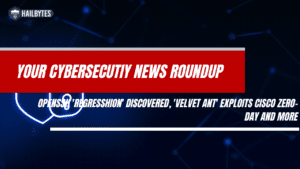Achieving NIST Compliance in the Cloud: Strategies and Considerations

Navigating the virtual maze of compliance in the digital space is a real challenge that modern organizations face, especially regarding the National Institute of Standards and Technology (NIST) Cybersecurity Framework.
This introductory guide will help you gain a better understanding of the NIST Cybersecurity Framework and how to achieve NIST compliance in the cloud. Let’s jump in.
What Is the NIST Cybersecurity Framework?
The NIST Cybersecurity Framework provides an outline for organizations to develop and improve their cybersecurity risk management programs. It is meant to be flexible, consisting of a wide variety of applications and approaches to account for each organization’s unique cybersecurity needs.
The Framework is composed of three parts – the Core, the Implementation Tiers, and the Profiles. Here is an overview of each:
Framework Core
The Framework Core includes five primary Functions to provide an effective structure for managing cybersecurity risks:
- Identify: Involves developing and enforcing a cybersecurity policy that outlines the organization’s cybersecurity risk, the strategies to prevent and manage cyberattacks, and the roles and responsibilities of individuals with access to the organization’s sensitive data.
- Protect: Involves developing and regularly implementing a comprehensive protection plan to reduce the risk of cybersecurity attacks. This often includes cybersecurity training, strict access controls, encryption, penetration testing, and updating software.
- Detect: Involves developing and regularly implementing appropriate activities to recognize a cybersecurity attack as quickly as possible.
- Respond: Involves developing a comprehensive plan outlining the steps to take in the event of a cybersecurity attack.
- Recover: Involves developing and implementing appropriate activities to restore what was impacted by the incident, improve security practices, and continue protecting against cybersecurity attacks.
Within those Functions are Categories that specify cybersecurity activities, Subcategories that break down the activities into precise outcomes, and Informative References that provide practical examples for each Subcategory.
Framework Implementation Tiers
Framework Implementation Tiers indicate how an organization views and manages cybersecurity risks. There are four Tiers:
- Tier 1: Partial: Little awareness and implements cybersecurity risk management on a case-by-case basis.
- Tier 2: Risk Informed: Cybersecurity risk awareness and management practices exist but are not standardized.
- Tier 3: Repeatable: Formal company-wide risk management policies and regularly updates them based on changes in business requirements and threat landscape.
- Tier 4: Adaptive: Proactively detects and predicts threats and improves cybersecurity practices based on the organization’s past and present activities and evolving cybersecurity threats, technologies, and practices.
Framework Profile
The Framework Profile outlines an organization’s Framework Core alignment with its business objectives, cybersecurity risk tolerance, and resources. Profiles can be used to describe the current and target cybersecurity management state.
The Current Profile illustrates how an organization is currently handling cybersecurity risks, while the Target Profile details outcomes an organization needs to achieve cybersecurity risk management goals.
NIST Compliance in the Cloud vs. On-Premise Systems
While the NIST Cybersecurity Framework can be applied to all technologies, cloud computing is unique. Let’s explore a few reasons why NIST compliance in the cloud differs from traditional on-premise infrastructure:
Security Responsibility
With traditional on-premise systems, the user is responsible for all security. In cloud computing, security responsibilities are shared between the cloud service provider (CSP) and the user.
So, while the CSP is responsible for the security “of” the cloud (e.g., physical servers, infrastructure), the user is responsible for security “in” the cloud (e.g., data, applications, access management).
This changes the NIST Framework’s structure, as it requires a plan that takes both parties into account and trust in the CSP’s security management and system and its ability to maintain NIST compliance.
Data Location
In traditional on-premise systems, the organization has complete control over where its data is stored. In contrast, cloud data can be stored in various locations globally, leading to different compliance requirements based on local laws and regulations. Organizations must take this into account when maintaining NIST compliance in the cloud.
Scalability and Elasticity
Cloud environments are designed to be highly scalable and elastic. The dynamic nature of the cloud means that security controls and policies also need to be flexible and automated, making NIST compliance in the cloud a more complex task.
Multitenancy
In the cloud, the CSP may store data from numerous organizations (multitenancy) in the same server. While this is common practice for public cloud servers, it introduces additional risks and complexities for maintaining security and compliance.
Cloud Service Models
The division of security responsibilities changes depending on the type of cloud service model used – Infrastructure as a Service (IaaS), Platform as a Service (PaaS), or Software as a Service (SaaS). This affects how the organization implements the Framework.
Strategies for Achieving NIST Compliance in the Cloud
Given the uniqueness of cloud computing, organizations need to apply specific measures to achieve NIST compliance. Here is a list of strategies to help your organization reach and maintain compliance with the NIST Cybersecurity Framework:
1. Understand Your Responsibility
Differentiate between the responsibilities of the CSP and your own. Typically, CSPs handle the security of the cloud infrastructure while you manage your data, user access, and applications.
2. Conduct Regular Security Assessments
Periodically assess your cloud security to identify potential vulnerabilities. Utilize the tools provided by your CSP and consider third-party auditing for an unbiased perspective.
3. Secure Your Data
Employ strong encryption protocols for data at rest and in transit. Proper key management is essential to avoid unauthorized access. You should also set up VPN and firewalls to increase your network protection.
4. Implement Robust Identity and Access Management (IAM) Protocols
IAM systems, like multi-factor authentication (MFA), allow you to grant access on a need-to-know basis and prevent unauthorized users from entering your software and devices.
5. Continuously Monitor Your Cybersecurity Risk
Leverage Security Information and Event Management (SIEM) systems and Intrusion Detection Systems (IDS) for ongoing monitoring. These tools allow you to respond promptly to any alerts or breaches.
6. Develop an Incident Response Plan
Develop a well-defined incident response plan and ensure your team is familiar with the process. Regularly review and test the plan to ensure its effectiveness.
7. Conduct Regular Audits and Reviews
Conduct regular security audits against the NIST standards and adjust your policies and procedures accordingly. This will ensure your security measures are current and effective.
8. Train Your Staff
Equip your team with the necessary knowledge and skills on cloud security best practices and the importance of NIST compliance.
9. Collaborate With Your CSP Regularly
Regularly liaise with your CSP about their security practices and consider any additional security offerings they may have.
10. Document All Cloud Security Records
Keep meticulous records of all cloud security-related policies, processes, and procedures. This can assist in demonstrating NIST compliance during audits.
Leveraging HailBytes for NIST Compliance in the Cloud
While adhering to the NIST Cybersecurity Framework is an excellent way to protect against and manage cybersecurity risks, achieving NIST compliance in the cloud can be complex. Fortunately, you don’t have to tackle the complexities of cloud cybersecurity and NIST compliance alone.
As specialists in cloud security infrastructure, HailBytes is here to help your organization achieve and maintain NIST compliance. We provide tools, services, and training to strengthen your cybersecurity posture.
Our goal is to make open-source security software easy to set up and difficult to infiltrate. HailBytes offers an array of cybersecurity products on AWS to help your organization improve its cloud security. We also provide free cybersecurity education resources to help you and your team cultivate a strong understanding of security infrastructure and risk management.
The NIST Cybersecurity Framework provides an outline for organizations to develop and improve their cybersecurity risk management programs. The Framework is composed of three parts – the Core, the Implementation Tiers, and the Profiles
The Framework Core includes five primary Functions to provide an effective structure for managing cybersecurity risks:
- Identify
- Protect
- Detect
- Respond
- Recover
Framework Implementation Tiers indicate how an organization views and manages cybersecurity risks. There are four Tiers:
- Tier 1: Partial: Little awareness and implements cybersecurity risk management on a case-by-case basis.
- Tier 2: Risk Informed: Cybersecurity risk awareness and management practices exist but are not standardized.
- Tier 3: Repeatable: Formal company-wide risk management policies and regularly updates them based on changes in business requirements and threat landscape.
- Tier 4: Adaptive: Proactively detects and predicts threats and improves cybersecurity practices based on the organization’s past and present activities and evolving cybersecurity threats, technologies, and practices.
The Framework Profile outlines an organization’s Framework Core alignment with its business objectives, cybersecurity risk tolerance, and resources. Profiles can be used to describe the current and target cybersecurity management state.
The Current Profile illustrates how an organization is currently handling cybersecurity risks, while the Target Profile details outcomes an organization needs to achieve cybersecurity risk management goals.
Author
Zach Norton is a digital marketing specialist and expert writer at Pentest-Tools.com, with several years of experience in cybersecurity, writing, and content creation.






